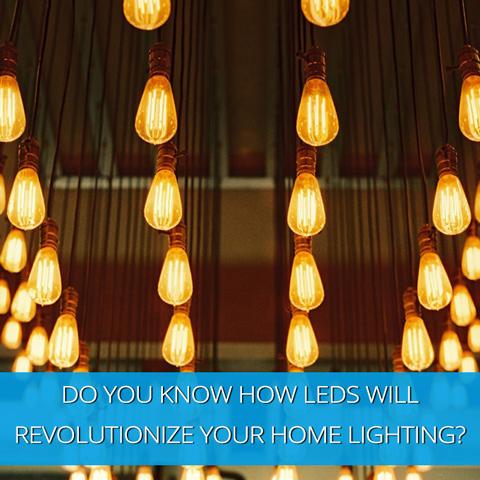Do You Know How LEDs Will Revolutionize Your Home Lighting?
Do-It-Yourself Lighting Refits: The Know-How
The environmentally-friendly, aesthetically pleasing and affordable attraction of LEDs is making waves. Within the last six months, Manchester council announced plans to replace street lamp bulbs with LEDs, and research by the Telegraph has mooted a £240 per year household savings when switching to LEDs. With costs of purchasing being driven down, but labour costs remaining high, many homeowners are thinking - can I do it myself?
Planning and installing the work yourself gives you the opportunity to achieve the perfect lighting you’re aiming for in the home, and will keep costs down. However, the work should not be approached lightly, and is a challenge for all homeowners.
Staying safe around electricity
The overarching theme when replacing lighting is electricity. Whilst not to be feared, electricity will obviously cause serious harm if underestimated, and statistics compiled by the Health and Safety Executive show that electricity is a leading cause of injury. Use personal protection equipment and ensure any open wires and mains are disconnected before commencing work on any socket.
Consider, too, the engineering elements of your new circuit. There exists equipment to assess energy flow and ensure you aren’t over or under loading a circuit. These calculations can become complicated, so don’t be afraid to enlist the help of a professional - if you have the equipment, costs may well be driven down.
Understanding your grades
In a similar vein to the use of wattage and warmth in conventional bulbs, LED systems use the colour temperature, measured in kelvin, to establish the power and colour of the light. This has been employed to great effect in the outdoors and survival industry, where high powered LEDs offer better brightness than conventional torches. Ensure you’ve picked up the right grade and colour of bulb before you begin the installation process, to ensure you have the right brightness and warmth for better areas of your house. Again, consider asking professionals if you’re looking to nail down the exact strength you need.
Use power strips
If you’re not comfortable with whole socket replacements, you can also consider using LED strip lighting. For aesthetic purposes, this will often only mean using an extra barrier to cover the strip, so the metallic/functional parts aren’t showing. This way you can create pleasant shadowed coves. You may also need to remove an outlet to replace it with a bespoke one for the LED; again, this can be an aesthetic choice, rather than necessary.
LED lighting is good for the wallet, for the planet, and for the overall look of your home. It isn’t scary to install, and with the supportive hand of professionals you can have your house LED central.


1 Comment